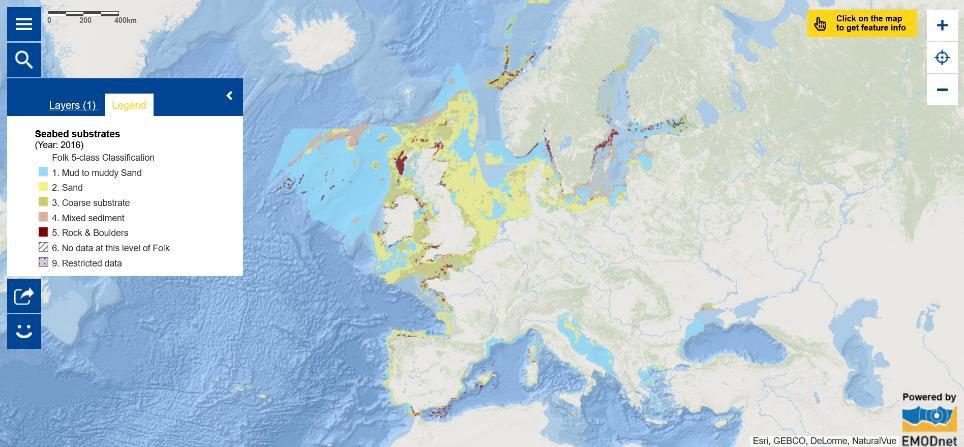Map of the Week – Seabed substrates

The virtual Marine Stakeholder Conference “Future of our Seas” organized by the European Commission is taking place on this 17 December 2021. The conference focuses on the Marine Strategy Framework Directive (MSFD) which was adopted on 17 June 2008 to protect the marine environment across Europe and has to be reviewed by 2023. In the context of the review process, the conference brings together stakeholders to discuss their views on the future of the Directive and the protection and management of the marine environment. The conference aims to showcase how the Directive serves the ambitions of the European Green Deal initiatives and to interrogate whether the Directive should be adapted to improve its performance and better address the challenges identified. Break-out sessions are organised around two main themes: “Achieving Good Environmental Status” and “Making the Directive work”.
The main goal of the Marine Strategy Framework Directive is to achieve Good Environmental Status of European Union (EU) marine waters. The Directive defines Good Environmental Status (GES) as:
“The environmental status of marine waters where these provide ecologically diverse and dynamic oceans and seas which are clean, healthy and productive”
To help EU Member States interpret what GES means in practice, the Directive sets out, in Annex I, eleven qualitative descriptors which describe what the environment will look like when GES has been achieved:
- Descriptor 1. Biodiversity is maintained
- Descriptor 2. Non-indigenous species do not adversely alter the ecosystem
- Descriptor 3. The population of commercial fish species is healthy
- Descriptor 4. Elements of food webs ensure long-term abundance and reproduction
- Descriptor 5. Eutrophication is minimised
- Descriptor 6. The sea floor integrity ensures functioning of the ecosystem
- Descriptor 7. Permanent alteration of hydrographical conditions does not adversely affect the ecosystem
- Descriptor 8. Concentrations of contaminants give no effects
- Descriptor 9. Contaminants in seafood are below safe levels
- Descriptor 10. Marine litter does not cause harm
- Descriptor 11. Introduction of energy (including underwater noise) does not adversely affect the ecosystem
This week, we look at sea floor integrity. What is it and why is it important? The sea floor integrity reflects the characteristics (physical, chemical and biological) of the sea bottom. These characteristics delineate the structure and functioning of marine ecosystems, especially for species and communities living on the sea floor (benthic ecosystems). Human activity (e.g., offshore installations, mining and sand extraction, some fishing practices, pollution…) can negatively impact sea floor integrity. Maintaining sea floor integrity is necessary to preserve marine biodiversity and living resources. A great diversity of sea floor types can be encountered depending on the substrate, the depth and the local environmental conditions. They form different kinds of habitats for fixed or mobile marine species that live on, inside and above the sea bottom. [1] Dive into the Map of the week to learn more about the seabed substrates of the European marine region!
The Map of the Week will be on a winter break in the coming two weeks. We will be back with new ocean and seas updates on 7 January 2022. We wish you happy and safe holidays!
The data in this map are provided by EMODnet.
[1] https://ec.europa.eu/environment/marine/good-environmental-status/descriptor-6/index_en.htm
